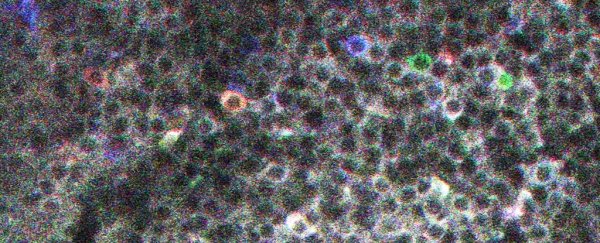For the first time, scientists have managed to identify what they believe to be the building blocks of memories - specifically, the neurons that handle the information related to where we are and where we've travelled in the past.
By lighting up these building blocks in the brains of mice, it's hoped that we can learn more about the way memories form in our own brains, the researchers behind the experiment say.
A team from the Institut de Neurobiologie de la Méditerranée in France made the discovery by adding a fluorescent protein to neurons in four mice. This particular protein lights up when calcium ions flood into a cell - a sure sign that the neuron is firing.
As the mice ran on a treadmill, the neurons lit up and became active in a sequential pattern, suggesting that they were keeping track of how far they had run.
When the animals were at rest, the same 'light show' appeared, but more quickly, and with neurons activating in distinct 'blocks' that appeared to represent different parts of the run.
"We've been able to image the individual building-blocks of memory," study leader Rosa Cossart told Emily Benson at New Scientist.
The cells that fired weren't all physically next to each other in the hippocampus of the brain, the scientists say, but they showed clear associations with other neurons involved in recording the run.
But there's room for dispute here, with other experts questioning the idea that this is enough evidence to suggest that these neurons are indeed 'memory building blocks'.
According to Kamran Diba from the University of Wisconsin, there's no reason why a continuous experience like the mice had on the treadmills would then later be split up into different blocks of cells.
"The cells essentially fire in order throughout the run, so why would it break down into discrete assemblies?" he expressed to New Scientist.
Nevertheless, Diba admits that the new experiments are of real interest, and if we really are seeing patterns of memory management as they happen, we could increase our understanding of how human memory works, as well as how diseases that affect memory, like Alzheimer's, can be better tackled.
While we understand some details of how memory works in the brain (in mice and rats, at least) - such as the use of something called place cells in the hippocampus dedicated to remembering the surrounding world - what's less clear is the pattern in which these cells fire, and how they're used by the brain.
The fluorescent protein technique used by the team at the Institut de Neurobiologie de la Méditerranée could prove really useful, because it allows them to keep track of more than 1,000 neurons per mouse.
That's a big improvement over the use of implanted electrodes to try and measure brain activity in rodents - while still helpful for research, that approach can only monitor around a hundred neurons at once.
Memory is a crucial tool for mice and humans alike, and the search to understand how it works continues.
The latest study has been published in Science.
